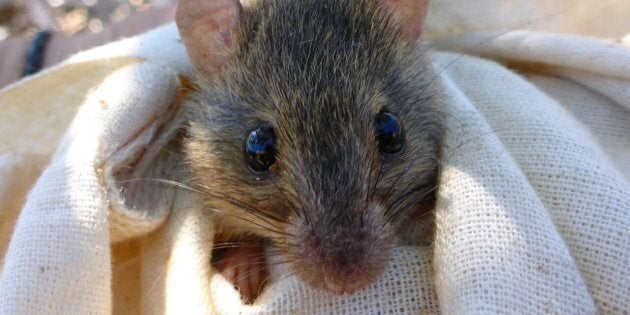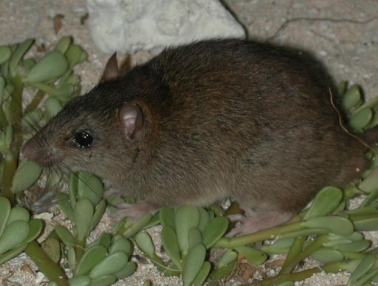
Well, world, we may have reached an incredibly depressing milestone.
For the first time on record, a mammal species has probably gone extinct as a direct result of human-caused climate change.
The Bramble Cay melomys is, or was, a small rodent that lived on an island off the coast of Australia. Scientists declared it extinct in a comprehensive report published this month.

The rat lived on Bramble Cay, a small island at the northern end of the Great Barrier Reef that sits only 10 feet above sea level at its highest point, according to National Geographic.
In 1978, there were hundreds of the little creatures on Bramble Cay, but as the portion of the island sitting above the high-tide mark has shrunk over the years, so has the amount of habitat available for rodents.
In 2004, Bramble Cay provided about 5.4 acres of habitat for the critters. By 2014, rising tides had depleted that area to only about 0.16 acres. That’s a 97 percent loss of habitat in just a decade.

Those rising tides are the result of two major factors. The first is “severe meteorological events” like La Nina. The authors of this month's report, who include researchers from Australia's Department of Environment and Heritage Protection and the University of Queensland, note that dramatic events like this have "been linked to climate change, specifically the increase in global mean temperature."
But extreme weather events aren’t the only factor. Rising sea levels, which the researchers note are “mostly attributable” to climate change caused by human activity, also cause higher tides.
The report declaring the Bramble Cay melomys extinct is based on a 2014 survey of Bramble Cay, during which time researchers found no trace of the animal despite "exhaustive efforts." The last known sighting of the Bramble Cay melomys was in 2009.
There is a chance the species might not be gone for good. The researchers say it's possible an undetected population might exist somewhere in Papua New Guinea. (One theory about how the melomys got to Bramble Cay in the first place is that it may have come from Papua New Guinea.) Researchers are currently unaware of any Bramble Cay melomys populations living in Papua New Guinea, but the report recommends a survey of the country’s Fly River region to look for them.
Still, the researchers recommend changing the animal's conservation status from "endangered" to "extinct in the wild," at least within Australia.
The species’ apparent disappearance “probably represents the first recorded mammalian extinction due to anthropogenic climate change,” they write.
Scientists predict that one-fourth of all the species on Earth could be headed for extinction by 2050 if climate change continues at its current rate.
